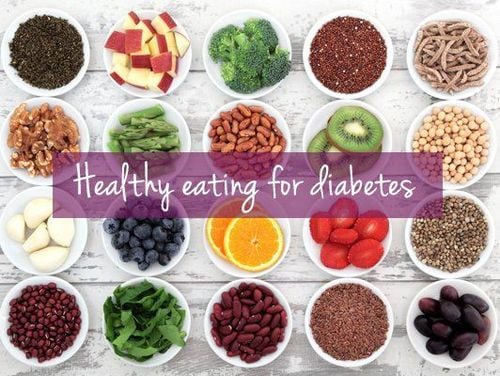High-fat foods are not only found in fast food restaurants but are also common in office meals, restaurants, schools, and even in the home menus of many people. Most foods that are fried or cooked with excess oil are considered high-fat foods. They include french fries, pizza, onion rings, mozzarella sticks, and donuts.
1. Causes bloating, stomach ache and diarrhea
Among the macronutrients such as carbs, fat and protein - fat is the slowest to digest. Because high-fat foods contain a high amount of fat, this nutrient slows down stomach emptying, which can cause bloating, nausea and stomach pain.
In people with digestive disorders, such as irritable bowel syndrome (IBS), chronic pancreatitis or stomach ulcers, high-fat foods can cause stomach pain, cramps and diarrhea.
2. Weakens your intestinal microbiome
High-fat foods are known to harm the beneficial bacteria that live in the intestine. These beneficial bacteria help to:
- Digest fiber. Bacteria in the intestine break down fiber to produce short-chain fatty acids (SCFAs), which have anti-inflammatory effects and may protect against digestive disorders.
- Support immunity. The intestinal microbiome communicates with immune cells to help regulate the body's response to infection
- Regulate weight. An imbalance of gut bacteria can contribute to weight gain
Intestine health. Disruptions to the intestinal microbiome have been linked to the development of IBS, while probiotics - live, healthy microorganisms found in some foods - may help improve symptoms. - Support heart health. Healthy intestinal bacteria can help increase heart-protective HDL cholesterol, while harmful species can produce compounds that damage arteries and contribute to heart disease.
A high-fat diet, such as a type of greasy food, can damage the intestinal microbiota by increasing the number of unhealthy gut bacteria and decreasing the number of beneficial bacteria. These changes lead to obesity and other chronic diseases, such as cancer, heart disease, diabetes, and Parkinson's disease.
3. Weight gain and obesity

High-fat foods, cooked with a large amount of fat, can cause weight gain due to their high calorie content. For example, a small baked potato (3.5 ounces or 100 grams) contains 93 calories and 0.1 grams of fat, while the same amount of french fries contains 312 calories and 15 grams of fat.
Obesity is linked to many negative health conditions, including heart disease, diabetes, stroke, and some cancers. A high level of trans fat in the body can contribute to weight gain. Trans fats are formed when vegetable oils are chemically altered to remain solid at room temperature. Despite regulations on their use, trans fats are still found in many high-fat foods due to the use of hydrogenated vegetable oils in frying and food processing.
Animal studies have noted that trans fats can lead to weight gain, even without excess calorie intake. Additionally, an 8-year study of 41,518 women determined that overweight women gained an additional 2.3 pounds (1kg) for every 1% increase in trans fat consumption.
4. Increase the risk of heart disease and stroke
High-fat foods have several negative impacts on heart health. For example, fried foods have been shown to increase blood pressure, decrease HDL (good) cholesterol, and lead to weight gain and obesity, all of which are associated with heart disease. Research shows that French fries increase the likelihood of inflammation and may contribute to heart disease.
Moreover, the risk of heart disease may be related to the frequency of fried food consumption. One study found that women who ate one or more servings of fried fish per week had a 48% higher risk of heart failure compared to those who ate one serving per month. Additionally, a large observational study involving 6,000 people across 22 countries showed that consuming fried foods, pizza, and fast food frequently increased the risk of stroke by 16%.
5. Increase the risk of diabetes

High-fat foods may increase the risk of type 2 diabetes. High-fat food consumption, including not only fried foods but also sugary beverages, leads to high calorie intake, weight gain, poor blood sugar control, and increased inflammation. Together, these factors raise the risk of type 2 diabetes and metabolic syndrome—a cluster of conditions including obesity, high blood pressure, and high blood sugar levels.
For example, a large observational study showed that eating fried foods 1 to 3 times per week increased the risk of type 2 diabetes by 15%, while eating fried foods 7 or more times per week increased the risk by up to 55%. Another study showed that individuals who consumed fast food more than twice per week had double the risk of insulin resistance, which may be a precursor to diabetes, compared to those who consumed fast food less than once per week.
6. Causes acne
In fact, studies link the Western diet, rich in refined carbohydrates, fast food, and high-fat foods, with the potential to cause acne. A study involving 5,000 Chinese adolescents found that frequent consumption of fried foods increased the risk of acne by 17%. Furthermore, another study involving 2,300 Turkish adolescents revealed that consuming greasy dishes like sausages and hamburgers increased the risk of acne by 24%. However, the exact mechanism behind this condition remains unclear. Some researchers suggest that a poor diet may affect gene expression and alter hormone levels, thereby promoting acne.
The oil used in frying high-fat foods contains high levels of omega-6, which may contribute to an imbalance in the fatty acid ratio—a potential cause of acne. Some high-fat foods, such as fried doughnuts, also contain refined carbohydrates. These are sugars and refined grains that have been stripped of fiber and many beneficial nutrients. These foods have high sugar content, which increases the activity of certain hormones in the body, including androgens and insulin-like growth factor 1(IGF-1 promoting acne by increasing skin cell production and the skin’s natural oil secretion.
7. Impairs brain function
A diet high in high-fat foods may cause problems with brain function. Weight gain, high blood pressure, and metabolic syndrome associated with high-fat foods are also linked to structural, tissue, and functional damage in the brain. Two large studies involving 5,083 and 18,080 people found that diets rich in high-fat and fried foods reduced learning and memory abilities and increased the risk of inflammation. In addition, diets high in trans fats are associated with brain function decline. In a study of 38 women, higher intake of saturated fats and trans fats was linked to poor memory and reduced work performance.
8. How to avoid high-fat foods

High-fat foods are often fried in large amounts of oil. Cooking methods that do not use much oil include:
- Air frying: Air fryers cook food at very high temperatures (450°F or 230°C), allowing it to become crispy with little or no oil. This technique works especially well with potatoes as a substitute for French fries.
- Convection frying: Convection fryers work by circulating hot air around the food, making it crispy on the outside but soft inside. This method uses 70% to 80% less oil compared to traditional frying methods.
- Steaming: This method uses steam from hot water and requires no oil. It is an excellent option for cooking foods such as dumplings, fish, and vegetables.
- Grilling: Grilling typically requires minimal oil. This technique is particularly useful for cooking meats and vegetables.
Additionally, using oil-absorbing paper and draining trays is another option to limit oil and fat when consuming fried foods.
Reference article: Healthline.comTo arrange an appointment, please call HOTLINE or make your reservation directly HERE. You may also download the MyVinmec app to schedule appointments faster and manage your reservations more conveniently.









